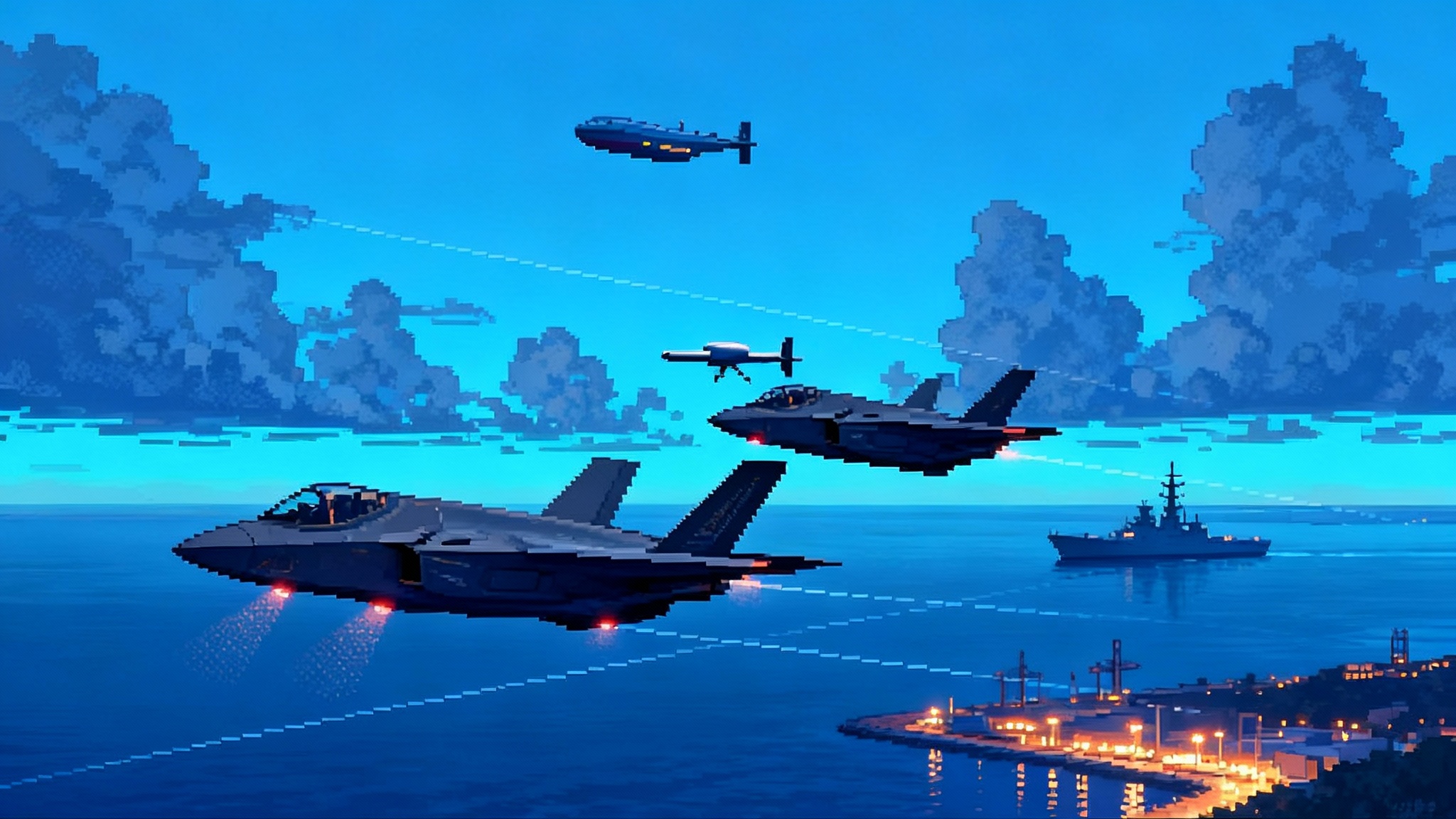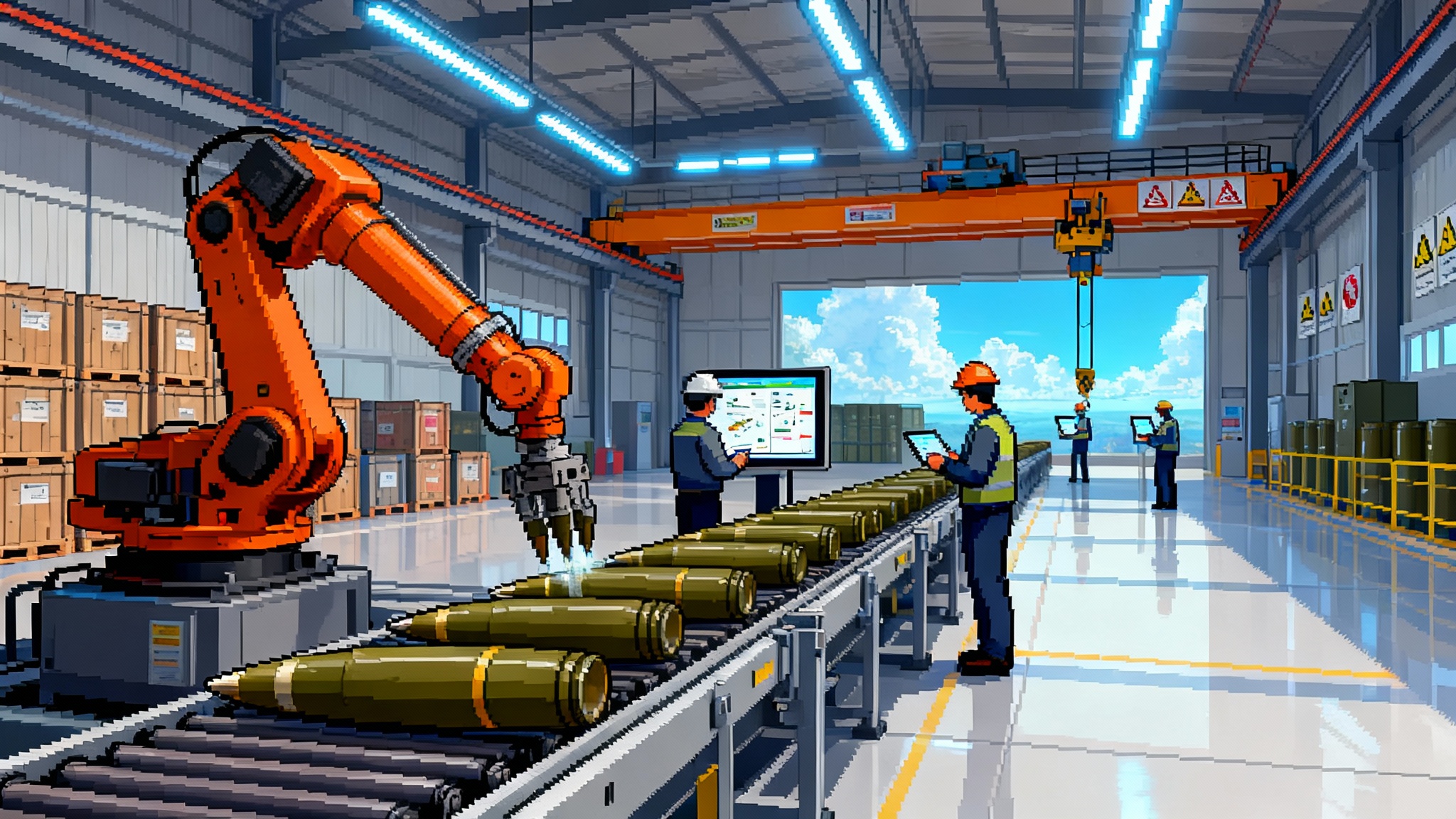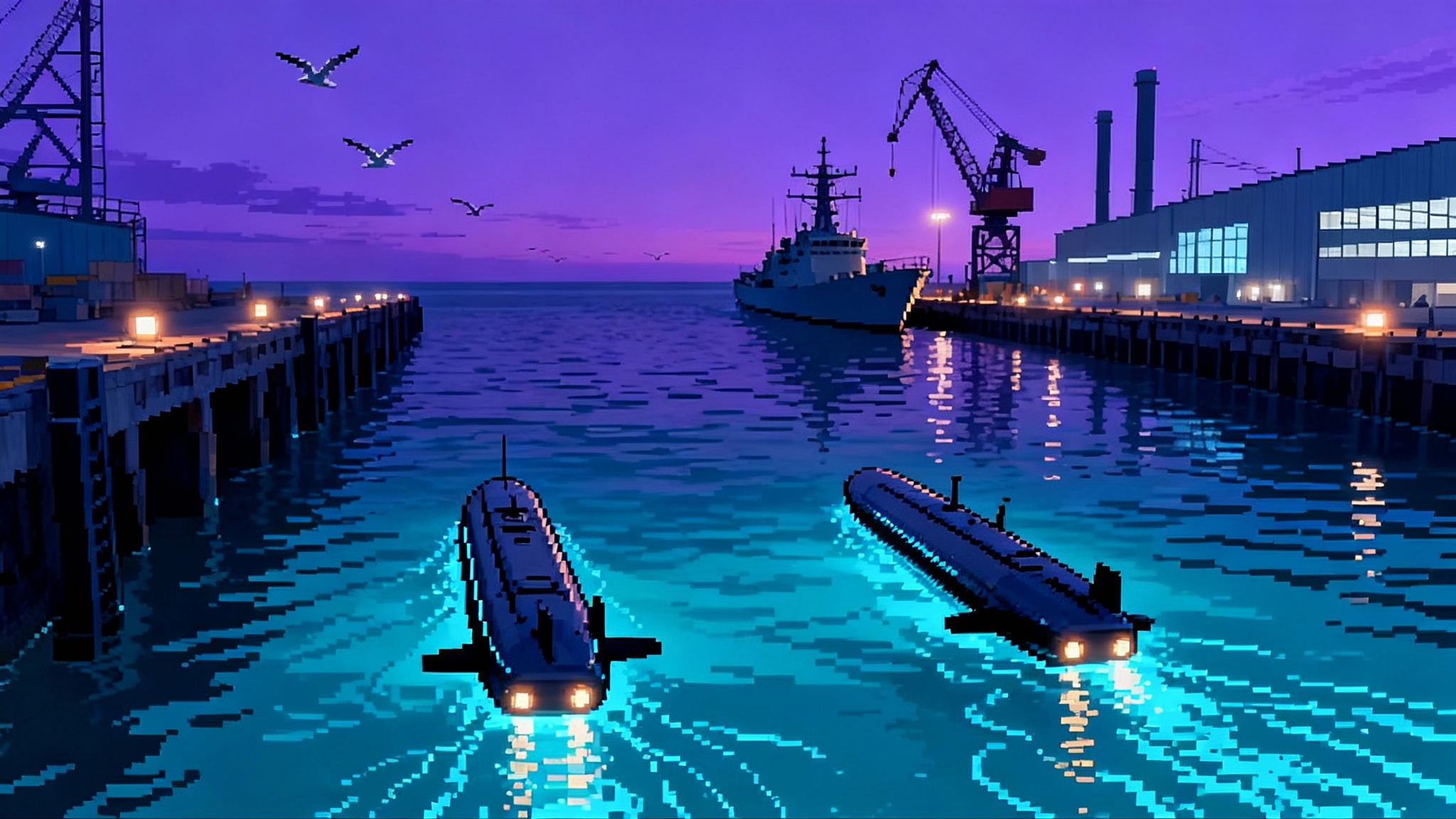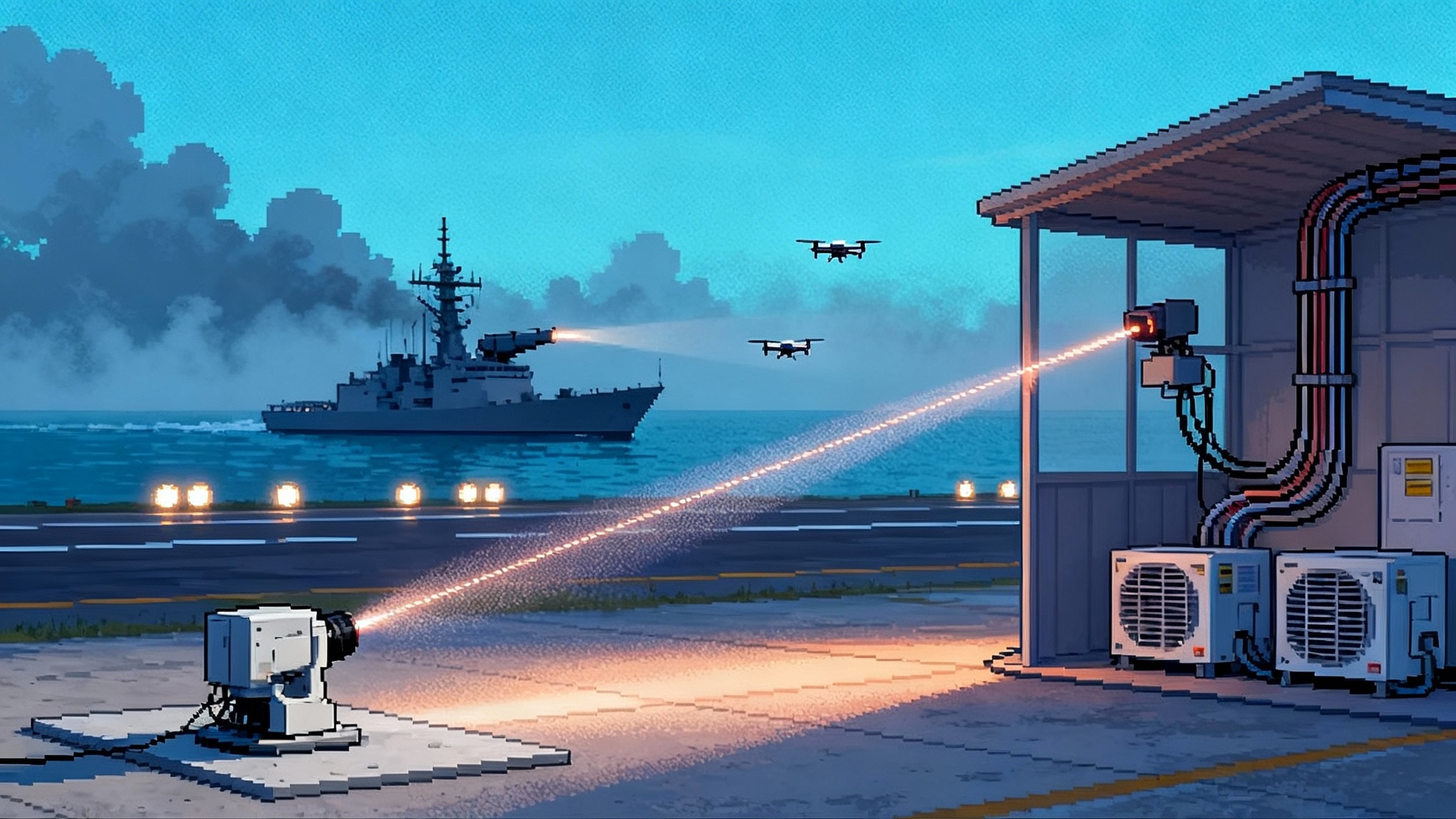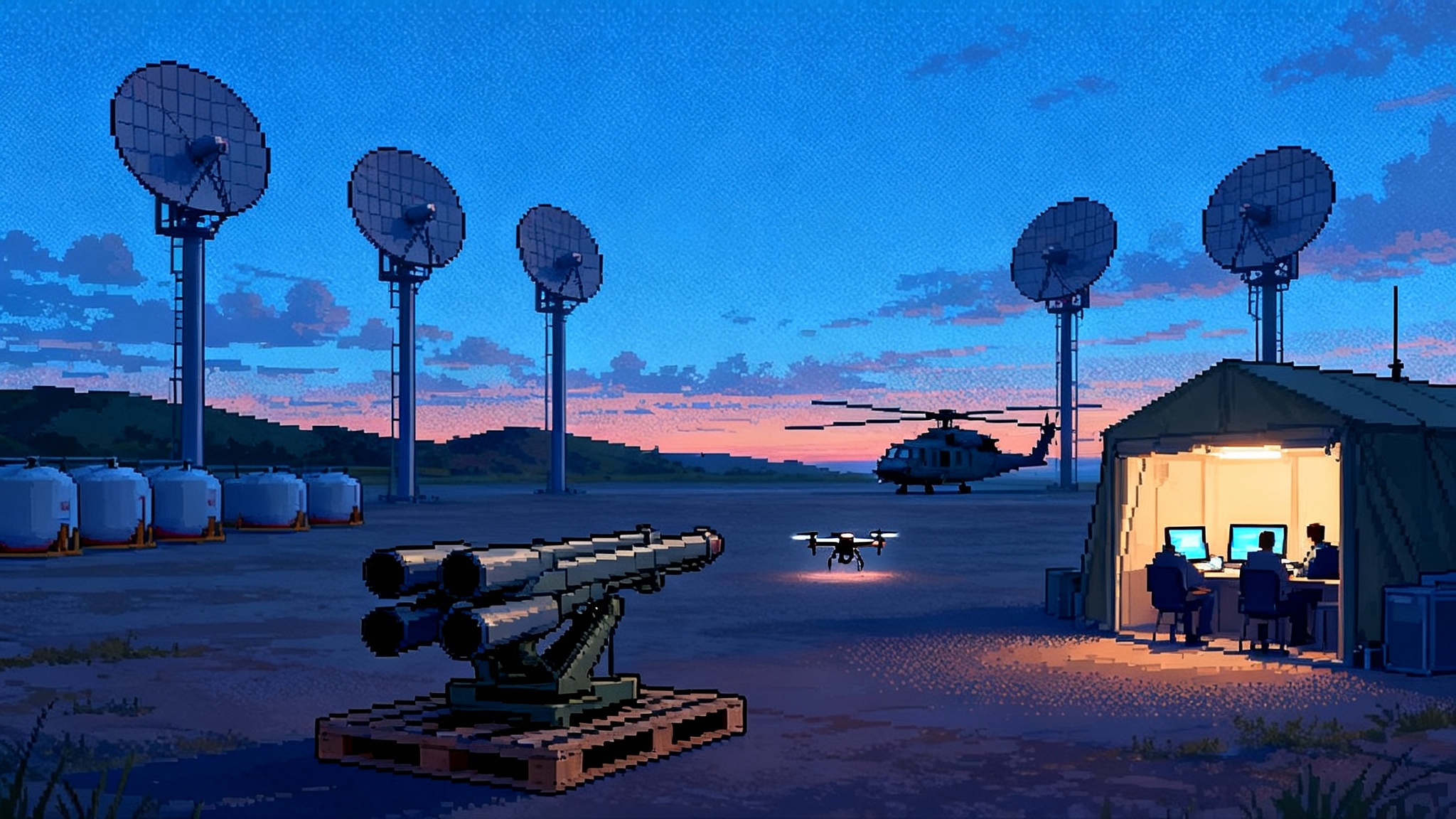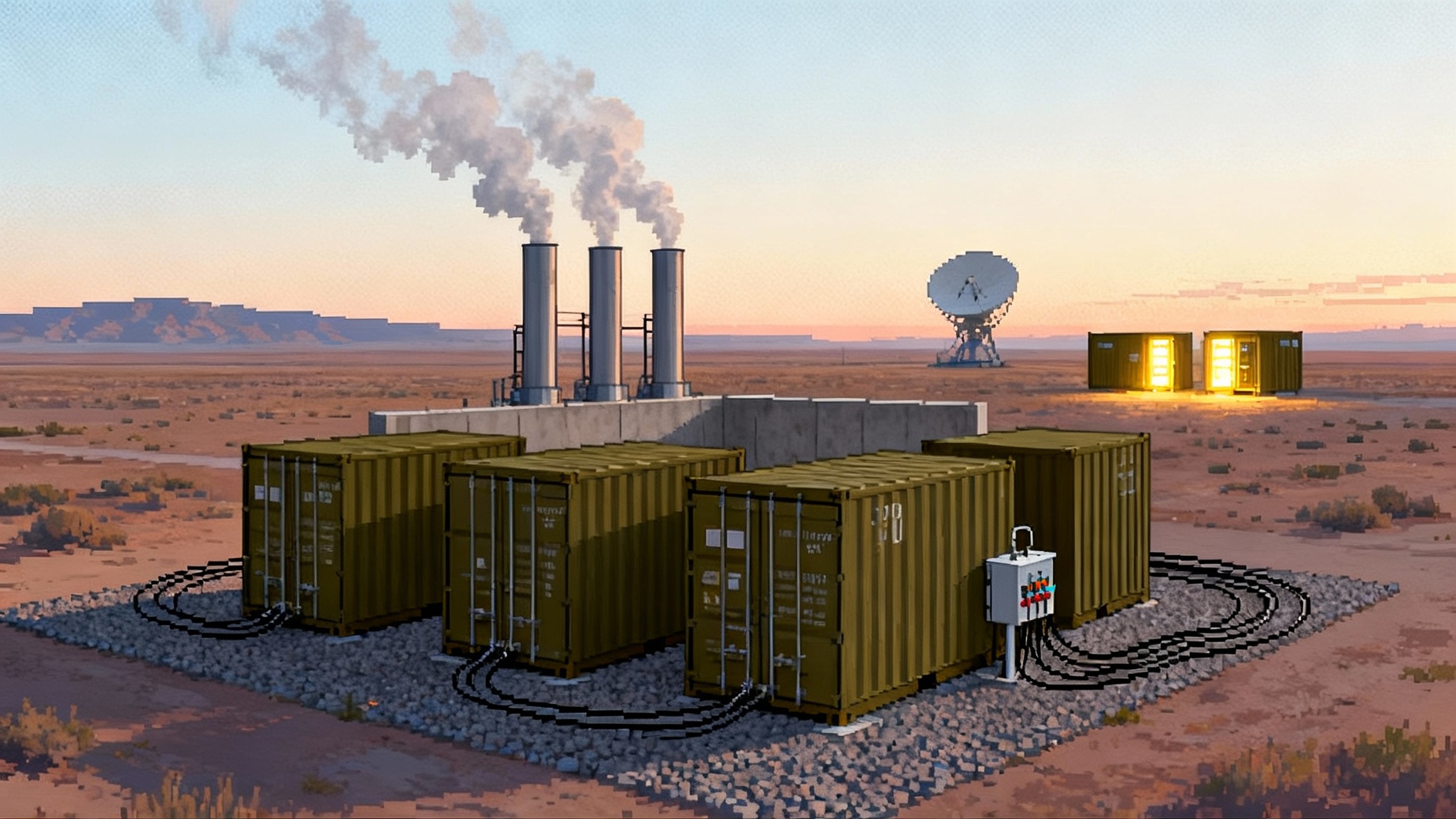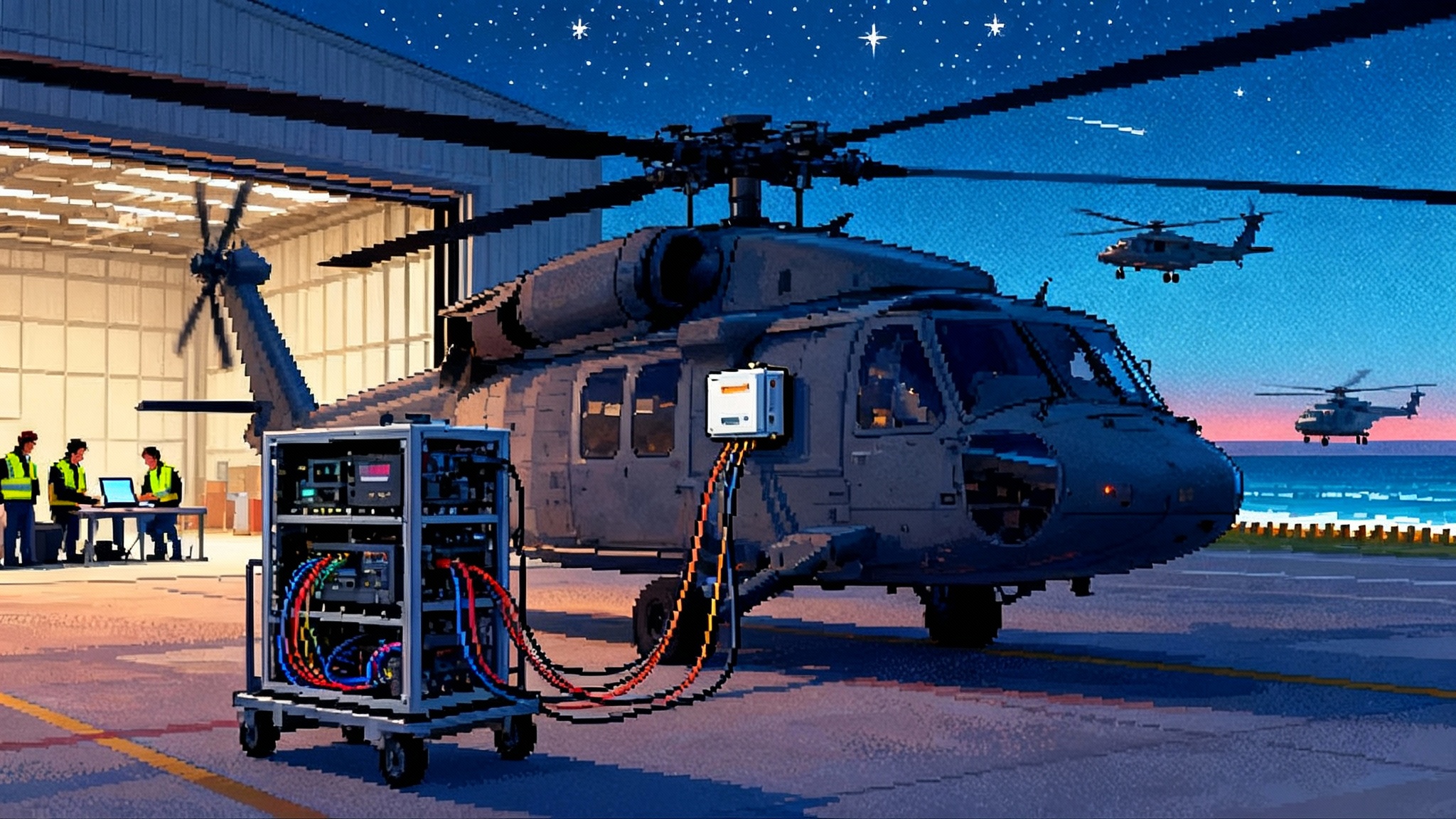CCA Takes Flight: Uncrewed Fighters Reset the Cost Curve
In one season, the US Air Force turned Collaborative Combat Aircraft from slides into sorties. First flights, new units, and a plan to bend airpower’s cost curve.
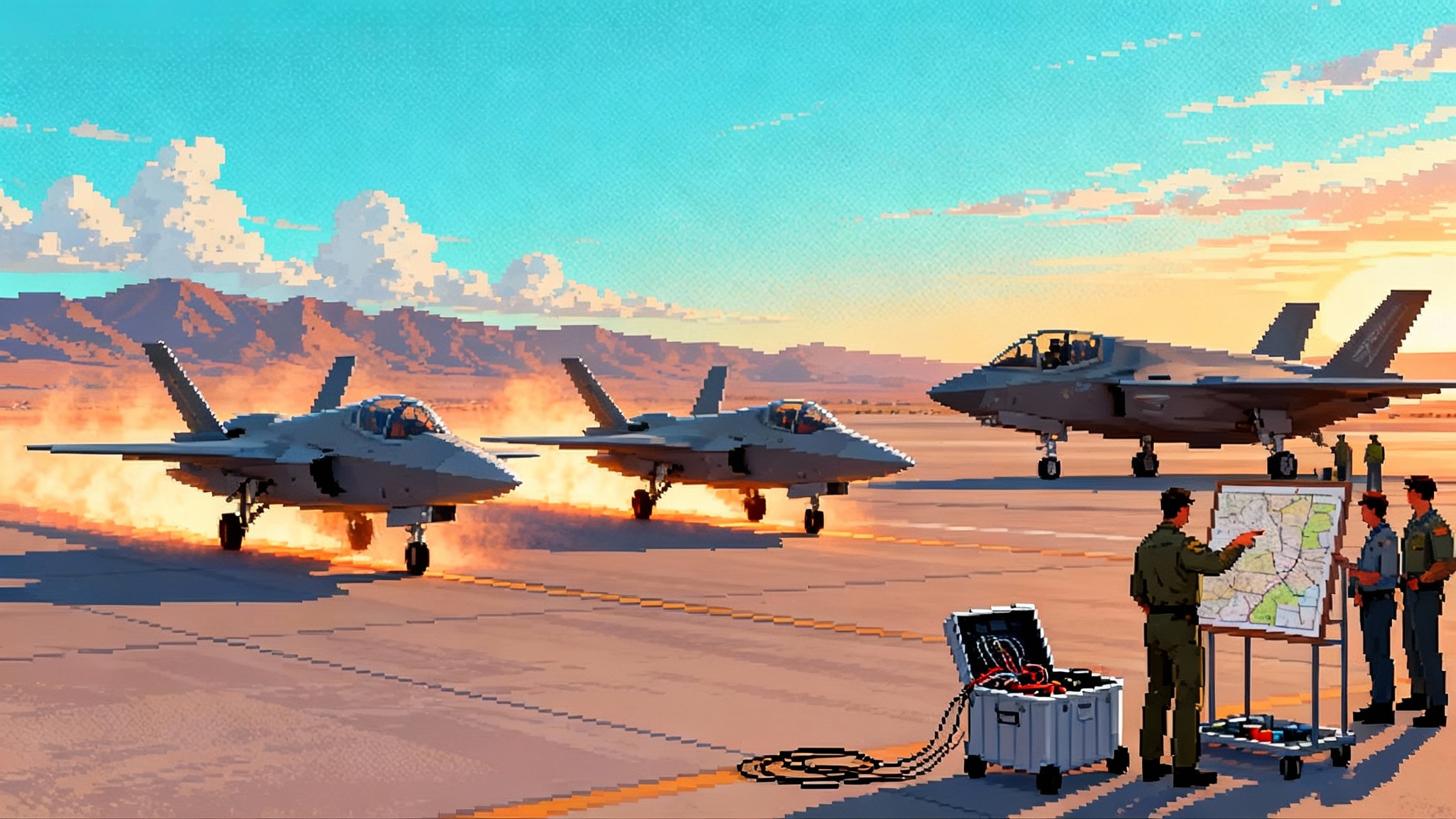
Breaking year: the first uncrewed fighters lift off
In 2025 the US Air Force crossed from concept to reality with its Collaborative Combat Aircraft program. On May 1, 2025, ground testing for the first two production-representative test vehicles began, the service named Beale Air Force Base as the preferred site for a new Aircraft Readiness Unit, and it reaffirmed a fiscal year 2026 production decision. The official update put hard dates on a once-abstract idea and showed photos of Anduril’s YFQ-44A and General Atomics’ YFQ-42A on the test line (Air Force confirms tests).
On August 27, 2025, the YFQ-42A began flight testing with the Air Force, kicking off a campaign that will move from vendor sites to government ranges at Edwards and Nellis. That first sortie marks the moment the Air Force started proving an uncrewed fighter in real air (GA-ASI flight testing begins). Anduril’s YFQ-44A, derived from the Fury lineage the company acquired with Blue Force Technologies, followed through a summer of ground runs and integration checks and is poised to fly.
Just as important as those airframes are the institutions standing up around them. The 53rd Wing activated an Experimental Operations Unit at Nellis Air Force Base in June 2025 to turn tactics, techniques, and procedures for humans and machines into a repeatable playbook. Beale’s readiness unit, designed to keep uncrewed fighters flight-ready with minimal daily flying, locks in a sustainment concept that looks more like missile squadrons than fighter squadrons.
For an Air Force accustomed to decade-long programs, this was a short sprint. The CCA downselect to Anduril and General Atomics happened in April 2024. Designations as YFQ-42A and YFQ-44A came in March 2025. Ground tests in May, then first flight in August, landed on the calendar the same summer. The speed is the story.
The 1,000-aircraft idea and the cost curve
The Air Force’s planning yardstick has been a 1,000-aircraft collaborative fleet. That figure is not a capped inventory; it is a way to ask what changes when uncrewed fighters fly in mass alongside fifth-generation aircraft and the future Next Generation Air Dominance system. The heart of the change is cost per effect.
A modern crewed fighter delivered under a multiyear lot costs on the order of tens of millions of dollars more than the targets set for CCA. Senior leaders have repeatedly described a desired range of roughly mid-twenties to about thirty million dollars per CCA for the first increment. That span matters less as a sticker price than as a lever. If one crewed fighter can command three to five uncrewed fighters that each cost a fraction as much, the commander can push more sensors and weapons forward, trade losses differently, and accept risk in ways that are impossible when every tail is a pilot, a career, and a jet worth near nine figures.
Cost per effect is also about time. If a new electronic attack payload can be integrated on the wing of an uncrewed fighter in months instead of years, the force’s response to a new threat is measured in software drops and adapter kits, not in a whole new aircraft.
Two paths to the same sky: Anduril vs. General Atomics
The two Increment 1 teams are solving the same problem from different angles.
-
General Atomics is building on a genus-species airframe approach that started with the XQ-67A. Think of a common chassis that can host variants. The YFQ-42A flows from that lineage and taps years of autonomy work flown on the MQ-20 Avenger. The first flight this summer signals a strategy that favors production-representative test articles, deliberate risk retirement, and heavy reuse of proven subsystems.
-
Anduril leans into a software-first model. The YFQ-44A traces to the Fury design and is being paired with a vertically integrated autonomy and command stack. The company’s broader move to scale production capacity in Ohio beginning in 2026 fits a thesis that speed and flexible manufacturing are as decisive as the airframe, because faster integration cycles and software cadence will matter as much as aerodynamics.
Both teams are aiming for high subsonic performance and fighter-relevant maneuver margins, but their biggest competition could be about who turns payload ideas into fielded capability sooner. That is where the cost curve bends. If one team proves it can take a new radar, a new electronic attack effect, or a new missile interface and get it fielded in a quarter rather than a year, that team resets expectations for everyone.
The FY26 decision gate and what it will really decide
The official line is clear. The first competitive production decision is scheduled for fiscal year 2026, with Increment 2 development starting in parallel. That decision will not be a beauty contest about artist renderings. It will reward four things:
-
On-range performance. Can the aircraft survive and maneuver as advertised, and can it do so when the radios are noisy, the weather is ugly, and the mission changes mid-sortie?
-
Autonomy maturity. Can the autonomy hold formation, deconflict, and execute intent under the supervision of a human mission commander, and can the commander clearly understand what the machine is doing and why?
-
Manufacturing readiness. Can the vendor show a credible path to dozens per month in 2027 without betting the schedule on a single supplier, a single engine model, or a single facility?
-
Open architecture discipline. Can the team ingest a payload they did not build and make it work without a bespoke rewrite?
The Air Force has also left the door open to multiple winners, and to buying different CCA types for different roles over time. That is a feature, not a bug. It avoids locking into a single vendor’s roadmap and lets the service mix and match for the mission.
Force design changes you will actually see
Here is what a 1,000-aircraft push will change in the real world.
-
Basing. With Beale Air Force Base as the preferred site for the first Aircraft Readiness Unit, the Air Force is signaling an operating model that does not rely on daily flying to maintain proficiency. Aircraft can be kept flight-ready with lower manpower. That is tailor-made for Agile Combat Employment, where aircraft hop among austere fields. Expect to see containerized support kits, highway-capable tow tractors, and small expeditionary teams that can stand up a two-ship of uncrewed fighters from a bare ramp in less than a day.
-
Training pipelines. The Experimental Operations Unit at Nellis will not just write tactics. It will reshape pilot training. The human in the loop will look more like a mission commander than a stick-and-rudder pilot. Expect new syllabi that teach four-ship crews to task and retask unmanned wingmen, to manage sensor apertures as a team, and to fail safely. Simulators and the Joint Simulation Environment will carry a larger fraction of repetitions. The goal is a clear mental model of what autonomy will do at each level of authority.
-
Maintenance and sustainment. Uncrewed fighters will break differently. Line-replaceable units, quick-swap engine modules, and high parts commonality promise turnarounds that look more like missile maintenance than depot-heavy fighter schedules. That eases the burden on a small active-duty force and creates room for a larger role for the Guard and Reserve in stateside sustainment.
-
Command and control. The battle rhythm shifts from one airplane carrying all the sensors and weapons to a constellation of apertures and magazines that a human crew choreographs in real time. That puts a premium on bandwidth management, onboard decision aids, and preplanned behaviors when links are cut. Lessons from the counter-drone default era will carry over as formations manage dense unmanned traffic and electronic attack.
Payloads that turn airframes into effects
An uncrewed fighter is really a flying payload truck whose value changes with the mission kit. Think of three families of payloads and how they will be used.
-
Air-to-air. A basic load could be two beyond-visual-range missiles in an internal or semi-recessed bay to preserve reach and signature. Pair that with a passive sensor and a data-fused track from a crewed fighter, and a two-ship of uncrewed fighters can act as a forward picket. The effect is to create dilemmas for an opposing formation, force them to defend in multiple sectors, and stretch their weapons. Industry has signaled plans to integrate current medium-range missiles, including the AIM-260's new playbook, on early increments. That is the fast path to combat relevance.
-
Electronic warfare and sensing. Swap missiles for a modular electronic attack pod and a wide-aperture passive sensor, and the same jet becomes an escort jammer that can also sniff for emitters. In a four-ship with a crewed quarterback, two uncrewed fighters can push an electronic attack forward while the other two present a weapons threat, complicating the enemy’s targeting picture.
-
Strike and suppression of enemy air defenses. With small diameter bombs or modular glide munitions, an uncrewed fighter becomes a magazine extension for stealth aircraft. The crewed jet pokes holes in the defenses; the uncrewed jets flood the gap with precision weapons. A decoy or expendable jammer mounted on an outer station gives a cheap way to soak up enemy fire or mask the main effort.
The thread through all three is speed of integration. Every week shaved off the timeline from payload idea to flight test is a week the cost curve bends in the Air Force’s favor.
The Navy’s parallel track
While the Air Force pushes Increment 1 toward production, the Navy has opened its own CCA line of effort. In late summer 2025 the sea service awarded early design contracts to multiple primes to shape a carrier-suitable CCA that can launch, recover, and live on the deck next to the future F/A-XX. The Navy’s needs are different. Deck handling, corrosion control, folding geometry, catapult and arresting loads, and heavy electromagnetic interference all drive design choices. But the services share a powerful common interest. If the Air Force and Navy align around the same modular software interfaces, payload standards, and autonomy levels, both will get more capability faster, and industry will invest in common kits rather than forks that cannot be reused.
What must accelerate now
The window before adversaries field comparable swarms is measured in a few budget cycles. To use it, three accelerators need real momentum.
-
Open architectures with teeth. The Air Force should publish stable, testable interface profiles for mission systems, autonomy services, and weapons integration and make them the price of admission to any Increment 1 or 2 buy. Borrow the smartphone metaphor. Every payload should arrive as an app with a clear permissions model and a certification test suite. The government runs the app store; vendors bring the apps. The benefit is obvious. A lab that now takes six months to wire up a new radar could do it in six weeks.
-
Rapid payload integration as a standing practice. Create a rolling, 90-day payload sprint cycle that finishing teams can join with a digital twin, a real adapter, and a live-fire milestone at the end. Celebrate the payload that goes from contract award to safe separation test in one quarter. Make it normal that a new electronic surveillance algorithm or a decoy interface shows up on the ramp in the time it used to take to plan a test.
-
Industrial surge before the selection. Engines, flight computers, and actuators are the pacing items for a 1,000-aircraft fleet. Buy long-lead lots now for both airframes and stipulate multi-source pathways where it is practical. Stand up second-source machining for the highest-risk parts. As covered in the factory surge in 2025, capacity and supply chain resilience are the real gating functions.
Two more actions will amplify the payoff.
-
Train the mission commanders early. Put uncrewed fighters into large exercises this year with clear rules of engagement for autonomy. Build a cadre of pilots who understand how to brief an algorithm and how to supervise a machine that is a partner, not a passenger.
-
Preposition access and infrastructure. Sign state and allied agreements to use select highways and auxiliary fields as CCA forward sites. Stock containerized power, shelters, and cryptographic gear now. The goal is to make a dispersed network that can go live in a weekend.
Risks you can see and how to keep them small
-
Trust in autonomy. This is not about replacing pilots. It is about letting software carry out commander’s intent. The fix is transparency. Every autonomy mode must explain what it will do, how it will keep clear of friendlies, and what it needs to continue. Build a red-team to probe the edge cases and publish the lessons across the enterprise.
-
Cyber exposure. Uncrewed fighters will be targets for spoofing, jamming, and data-layer manipulation. Bake in layered communications, robust authentication, and behaviors that are predictable to the human commander when the links are degraded. Assume the enemy will try to turn your mass against you and design for graceful failure.
-
Cost creep. The surest way to lose the cost curve is to gold-plate Increment 1. Hold the line. Deliver the baseline with room to grow and let Increment 2 absorb the exquisite requirements.
-
Divergent standards. If the Air Force and Navy drift into different autonomy levels, data formats, or payload interfaces, industry will slow and costs will rise. Put a joint authority in charge of interface stewardship and make it the final word.
What changes when the mass shows up
Imagine a Pacific scenario in 2029. A small package of crewed stealth aircraft pushes toward a contested island chain. Ahead and to the flanks, a half-dozen uncrewed fighters fly as pickets. Two carry electronic attack kits and start to peel a hole in the radar picture. Two more hold as forward magazines with medium-range missiles. The last pair sweep passive sensors across the battlespace. The human crew watches a fused picture, moves the formation geometry with a few simple commands, and lets the autonomy execute the details. The enemy suddenly has three problems at once. That is the cost curve in action.
None of this diminishes the pilot. It elevates the pilot to a new role. The pilot becomes a mission commander choreographing a team that is part human and part machine. The calendar says the team is almost here.
The smart conclusion
The story of 2025 is not just that an uncrewed fighter flew. It is that the Air Force stacked milestones in one season. Ground tests in May. An operational unit to write the playbook in June. First flight in August. A production decision in fiscal year 2026. The Navy is lining up a carrier variant path behind it. If open architectures and payload integration cycles accelerate now, the United States can field useful mass before a rival fields comparable swarms. The moment to lock in that advantage is short. The recipe is simple. Hold Increment 1 tight. Make payloads plug in fast. Scale production before the ink is dry. Do those three and 2025 will be remembered as the year airpower’s cost curve finally bent in the right direction.
